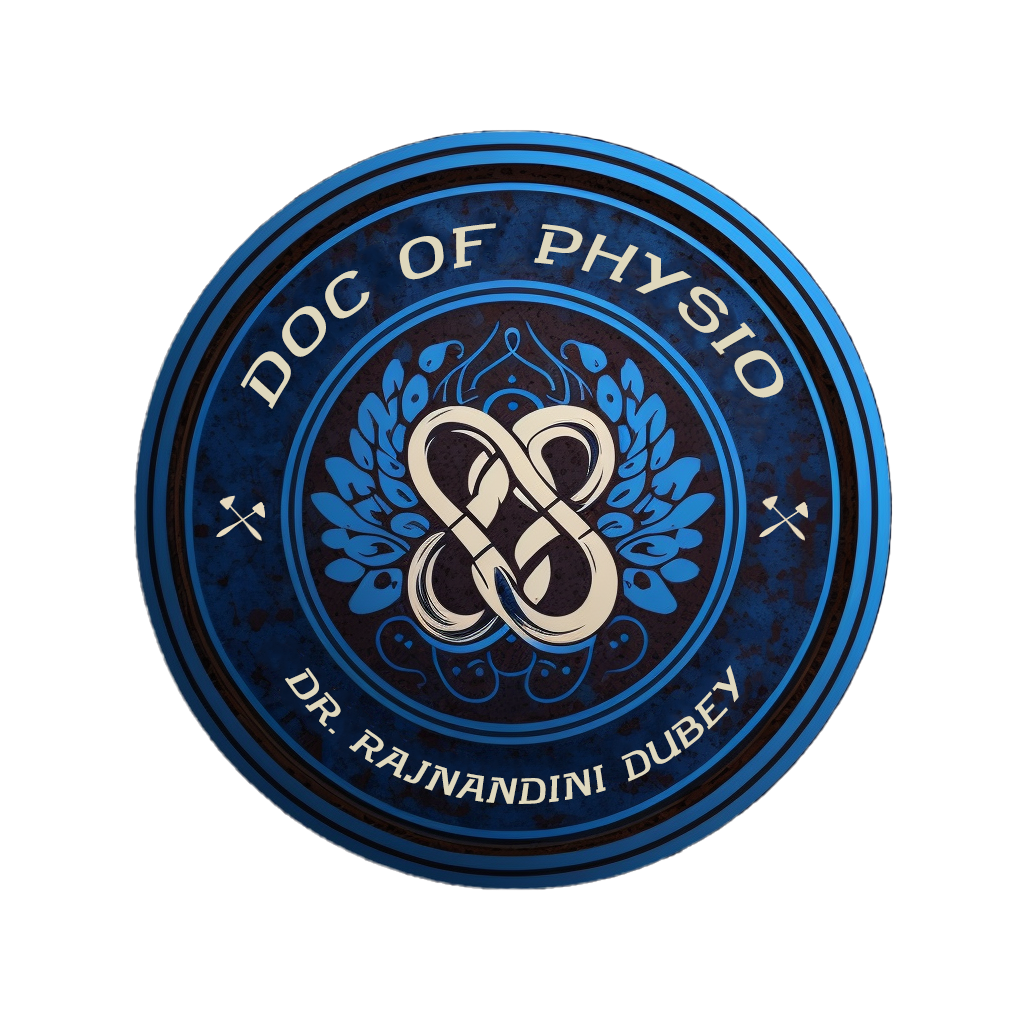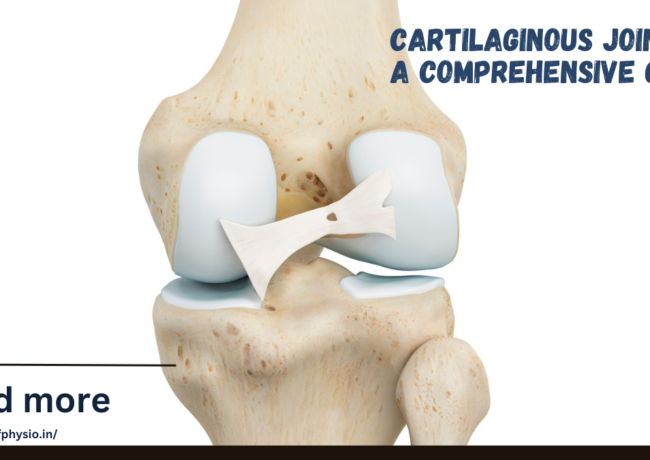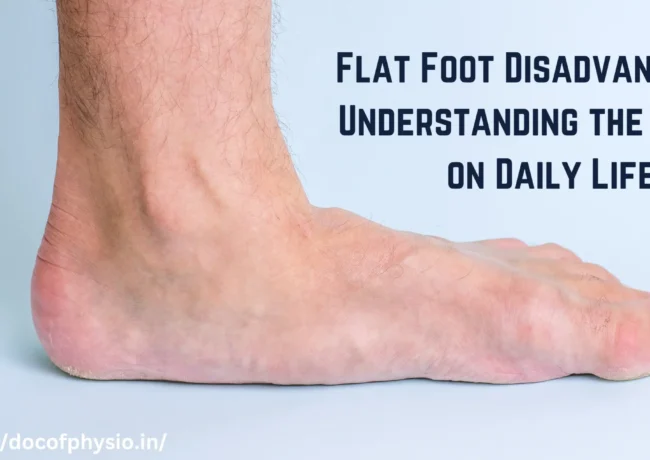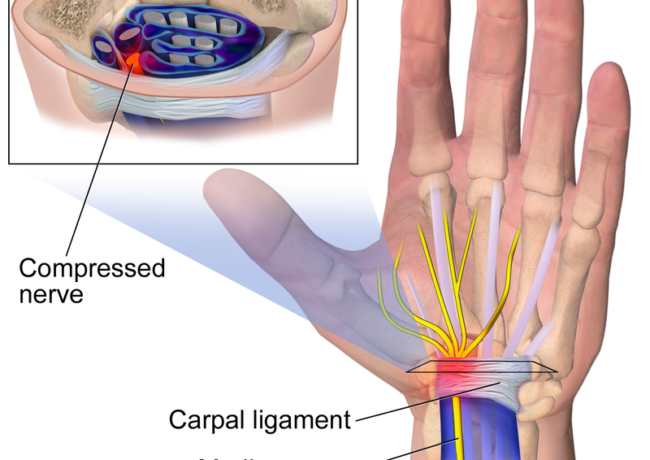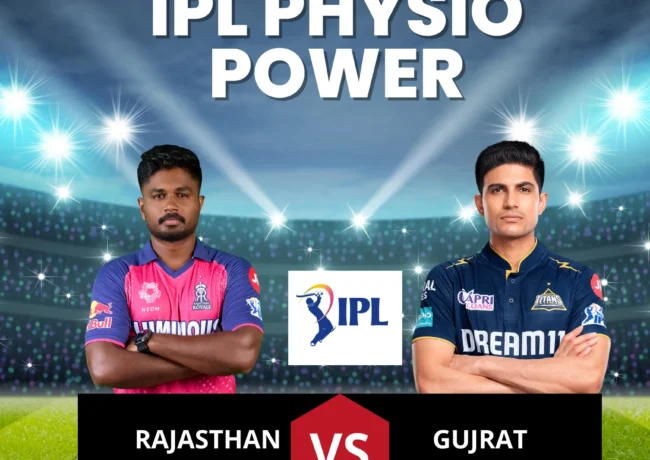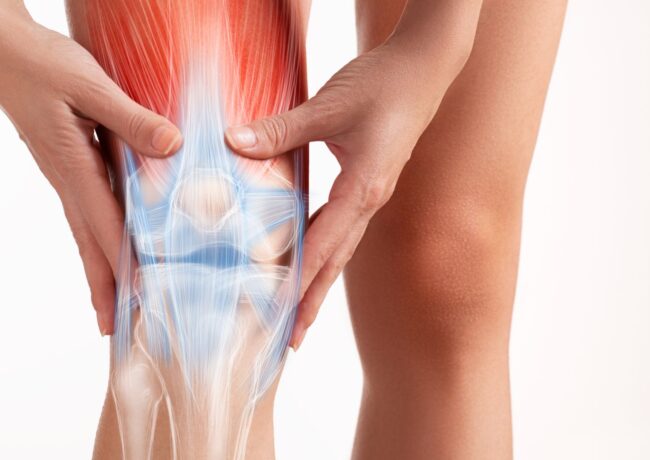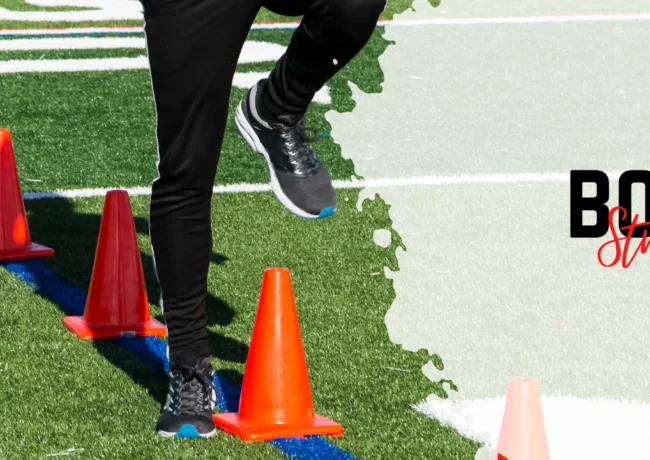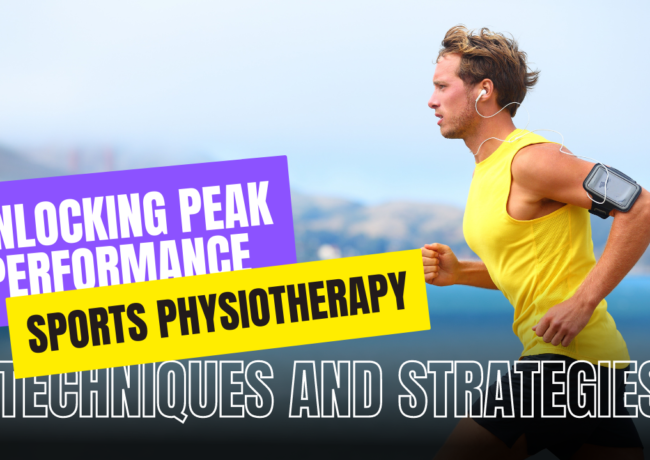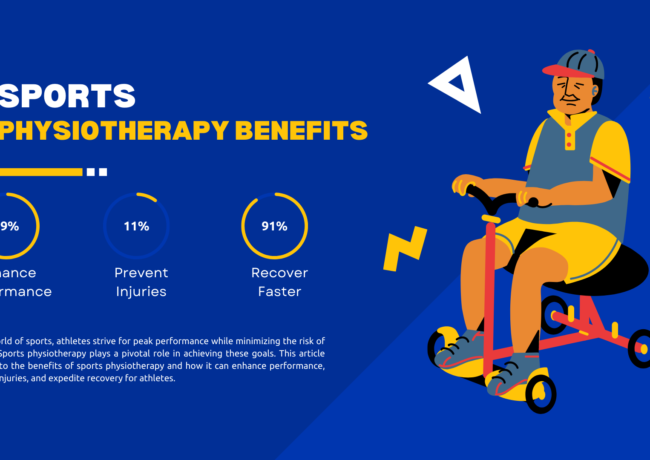
Unlocking Peak Performance: Sports Physiotherapy Techniques and Strategies
- July 04, 2023
- by
- Dr. Rajnandini Dubey
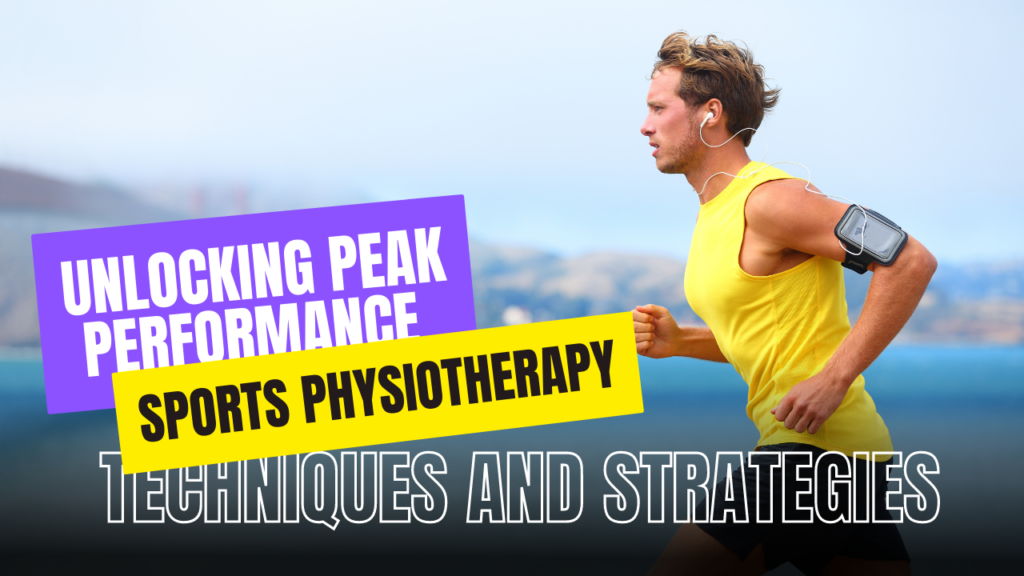
Introduction
Are you seeking to elevate your athletic abilities and achieve new milestones in your preferred sport? Search no more! Sports physiotherapy is the answer to unlocking your utmost capabilities, safeguarding against injuries, and maximizing your overall health.This article will go deeply into sports physiotherapy, illuminating the numerous methods and strategies employed in the field to assist athletes in reaching their full potential. This article is the ultimate resource for sports enthusiasts or professional athletes looking to improve their game.
Table of Contents
| Sr# | Titles |
|---|---|
| 1. | Understanding Sports Physiotherapy |
| 2. | The Role of Sports Physiotherapy in Performance Enhancement |
| 3. | Injury Prevention Strategies: Strengthening and Conditioning |
| 4. | Rehabilitation Techniques: Recovery and Return to Sport |
| 5. | Biomechanical Analysis: Enhancing Efficiency and Performance |
| 6. | Flexibility and Mobility Training: Increasing Range of Motion |
| 7. | Sports-Specific Rehabilitation: Tailoring Treatment to Your Sport |
| 8. | Mental Conditioning: Developing a Winning Mindset |
| 9. | Nutrition for Athletic Performance: Fueling Your Success |
| 10. | Technology in Sports Physiotherapy: Innovations for Performance |
| 11. | The Importance of Rest and Recovery in Performance Optimization |
| 12. | Goal Setting and Monitoring: Tracking Your Progress |
| 13. | Sports Physiotherapy for Youth Athletes: Setting the Foundation |
| 14. | The Role of Sports Physiotherapy in Aging Athletes |
| 15. | Taking Your Performance to the Next Level: Continuing Education |
1. Understanding Sports Physiotherapy
Sports physiotherapy is a distinct domain that centers on evaluating, treating, and mitigating sports-related ailments. It adopts a comprehensive methodology that attends to the bodily, cognitive, and affective dimensions of athletic prowess. Sports physiotherapists, equipped with specialized knowledge, collaborate closely with athletes to enhance their capabilities and mitigate the likelihood of injuries..
2. The Role of Sports Physiotherapy in Performance Enhancement
Sports physiotherapy assumes a pivotal function in elevating athletic prowess. Through the identification and rectification of individual bodily deficiencies or irregularities, sports physiotherapists facilitate enhancements in strength, flexibility, endurance, and overall movement kinetics for athletes. By formulating tailored treatment regimens and exercise protocols, they cater to the unique requirements of each athlete, propelling them towards their maximum capabilities and exceptional achievements in their chosen sport.
3. Injury Prevention Strategies: Strengthening and Conditioning
Preventing injuries is paramount in sports performance.Sports physiotherapy emphasizes exercises for strength and conditioning, aiding athletes in fostering resilience and decreasing injury probabilities. Through the integration of exercises that specifically target essential muscle groups, enhance stability, and promote proprioception, sports physiotherapists facilitate the cultivation of the strength and control required for optimal performance, all while minimizing injury risks.
– Implementing a comprehensive warm-up routine
Sports physiotherapy emphasizes exercises for strength and conditioning, aiding athletes in fostering resilience and decreasing injury probabilities. Through the integration of exercises that specifically target essential muscle groups, enhance stability, and promote proprioception, sports physiotherapists facilitate the cultivation of the strength and control required for optimal performance, all while minimizing injury risks.
– Building strength and endurance
Strength and endurance form the cornerstone of athletic achievement. Sports physiotherapists create personalized strength and conditioning regimens targeting specific muscle groups and movement patterns that are pertinent to the athlete’s chosen sport. These regimens encompass activities like weightlifting, resistance training, and plyometrics to foster enhanced strength, power, and endurance.
– Enhancing balance and coordination
Superior balance and coordination are crucial for achieving peak athletic prowess. Sports physiotherapists employ exercises that push an athlete’s balance and coordination abilities, such as single-leg drills, balance boards, and stability exercises. By augmenting balance and coordination, athletes can elevate their agility, reaction time, and overall performance.
4. Rehabilitation Techniques: Recovery and Return to Sport
sports injuries are common, but sports physiotherapy may speed up the healing process and get you back on the field faster. Sports physiotherapists utilise various techniques to speed up their patients’ recovery and facilitate their risk-free return to the competition.
– Manual therapy for pain relief and tissue healing
Manual therapy methods like massage, joint mobilization, and soft tissue mobilization are frequently employed by sports physiotherapists to alleviate pain, diminish inflammation, and enhance tissue healing. These hands-on techniques aid athletes in restoring functional movement, enhancing joint mobility, and addressing muscular imbalances.
– Therapeutic exercises for strength and stability
Rehabilitation programs typically include therapeutic exercises that focus on rebuilding strength, stability, and functional movement. Sports physiotherapists design individualized exercise programs that target specific areas affected by the injury, gradually progressing the athlete’s intensity and complexity as they regain strength and stability.
– Gradual return-to-sport protocols
Returning to sport too quickly after an injury can lead to re-injury or setbacks. Sports physiotherapists develop gradual return-to-sport protocols that allow athletes to safely reintegrate into their sport. These protocols include progressive exercises and activities to ensure athletes regain full function and confidence before resuming full participation.
5. Biomechanical Analysis: Enhancing Efficiency and Performance
Understanding biomechanics is crucial for optimizing sports performance. Sports physiotherapists analyze an athlete’s movement patterns and mechanics to identify areas of inefficiency or faulty movement. By pinpointing biomechanical issues, they can develop targeted interventions and corrective exercises to improve technique, reduce energy expenditure, and enhance performance.
– Assessing movement patterns and identifying inefficiencies
Sports physiotherapists use advanced assessment techniques to analyze an athlete’s movement patterns. This may involve video analysis, motion capture technology, or physical examinations to identify any biomechanical inefficiencies or compensations. By understanding these movement patterns, sports physiotherapists can devise strategies to improve technique and optimize performance.
– Corrective exercises and movement retraining
Based on the biomechanical analysis, sports physiotherapists develop specific corrective exercises and movement retraining programs to address the identified inefficiencies. These exercises focus on strengthening weak muscle groups, improving joint alignment, and enhancing movement patterns to promote efficiency and reduce the risk of injuries.
6.Flexibility and Mobility Training: Increasing Range of Motion
Flexibility and mobility training aims to improve an athlete’s range of motion and joint flexibility. It involves stretching exercises, dynamic movements, and specialized techniques to increase flexibility and enhance athletic performance.
7.Sports-Specific Rehabilitation: Tailoring Treatment to Your Sport
Sports-specific rehabilitation focuses on rehabilitating athletes after injuries or surgeries. It involves customizing treatment plans based on the specific demands and movement patterns of the athlete’s sport. This approach ensures a safe and effective recovery that allows athletes to return to their sport at their optimal level.
8.Mental Conditioning: Developing a Winning Mindset
Mental training encompasses the methods employed to cultivate a resilient and optimistic mindset in athletes. It encompasses various techniques including visualization, establishing goals, engaging in positive self-dialogue, and managing stress. Mental conditioning helps athletes enhance focus, confidence, resilience, and overall performance.
9.Nutrition for Athletic Performance: Fueling Your Success
Nutrition plays a crucial part in the realm of athletic achievement. It entails the intake of a well-balanced diet that furnishes the essential nourishment, vitality, and hydration required to empower the body for peak performance, stamina, and recuperation. Appropriate nutrition empowers athletes to unlock their utmost physical capabilities and attain their desired performance objectives.
10.Technology in Sports Physiotherapy: Innovations for Performance
Technology has revolutionized sports physiotherapy by introducing innovative tools and techniques to enhance performance and aid in injury prevention and rehabilitation. Examples include wearable devices for monitoring performance and recovery, virtual reality for rehabilitation exercises, and advanced imaging techniques for diagnosing and treating sports-related injuries.
11.The Importance of Rest and Recovery in Performance Optimization
Rest and recovery are essential components of performance optimization.By getting sufficient sleep, athletes can avoid overuse injuries and achieve peak performance. Athletes must take care of their bodies and minds through recovery techniques such as rest, active rest, massage, and proper nutrition.
12.Goal Setting and Monitoring: Tracking Your Progress
Goal setting is a vital aspect of athletic development. It involves setting specific, measurable, achievable, relevant, and time-bound (SMART) goals to drive performance improvement. Monitoring progress toward these goals helps athletes stay motivated, make adjustments to their training, and track their overall development.
13.Sports Physiotherapy for Youth Athletes: Setting the Foundation
Sports physiotherapy for youth athletes focuses on optimizing physical development, preventing injuries, and promoting long-term athletic success. It involves age-appropriate training, injury prevention strategies, movement assessment, and guidance on proper technique and form. Sports physiotherapy sets a solid foundation for young athletes to thrive in their chosen sports.
14.The Role of Sports Physiotherapy in Aging Athletes
Sports physiotherapy plays a crucial role in supporting the health and performance of aging athletes. It focuses on managing age-related changes, preventing injuries, and maintaining physical function and mobility. Sports physiotherapists employ tailored exercise programs, manual therapy techniques, and lifestyle modifications to address the unique needs of aging athletes.
15.Taking Your Performance to the Next Level: Continuing Education
Continuing education is essential for athletes seeking to elevate their performance to the next level. It involves staying updated on the latest training methods, sports science research, and technological advancements. Continuing education provides athletes with new insights, strategies, and tools to enhance their training, performance, and overall athletic journey.
Conclusion
Sports physiotherapy proves to be an indispensable resource for athletes striving to optimize their performance. By integrating tailored methods and approaches, athletes can enhance their physical capacities, avoid injuries, and expedite the recovery phase. Irrespective of whether you are a professional athlete or a dedicated enthusiast, the insights and support provided by sports physiotherapy can exert a significant influence on your athletic journey. It is important to bear in mind that success in sports is not solely contingent upon physical power but also relies upon comprehending one’s own physique, rectifying areas of weakness, and diligently striving for enhancement.
Frequently Asked Questions
- How can sports physiotherapy help in preventing sports injuries?
- Sports physiotherapy helps in preventing sports injuries by implementing strengthening and conditioning exercises, improving balance and coordination, and providing guidance on proper warm-up routines and injury prevention strategies.
- What are some common sports physiotherapy techniques used for rehabilitation?
- Common sports physiotherapy techniques used for rehabilitation include manual therapy, therapeutic exercises, modalities like ultrasound and electrical stimulation, and gradual return-to-sport protocols.
- How does sports physiotherapy contribute to the overall performance enhancement of athletes?
- Sports physiotherapy enhances athletes’ overall performance by boosting strength, flexibility, balance, coordination, and movement mechanics. It aids in injury recovery, injury prevention, and the optimization of physical capabilities.
- How can biomechanical analysis in sports physiotherapy enhance performance?
- Biomechanical analysis in sports physiotherapy involves assessing an athlete’s movement patterns and identifying inefficiencies. By addressing these inefficiencies through corrective exercises and movement retraining, athletes can improve technique, reduce energy expenditure, and enhance performance.
- Is sports physiotherapy beneficial for youth athletes?
- Yes, sports physiotherapy is beneficial for youth athletes. It aids in establishing a solid groundwork for correct movement patterns, tackling disparities, and averting injuries. Sports physiotherapists collaborate with young athletes to ensure secure and efficient training methodologies, fostering sustained athletic progress.



